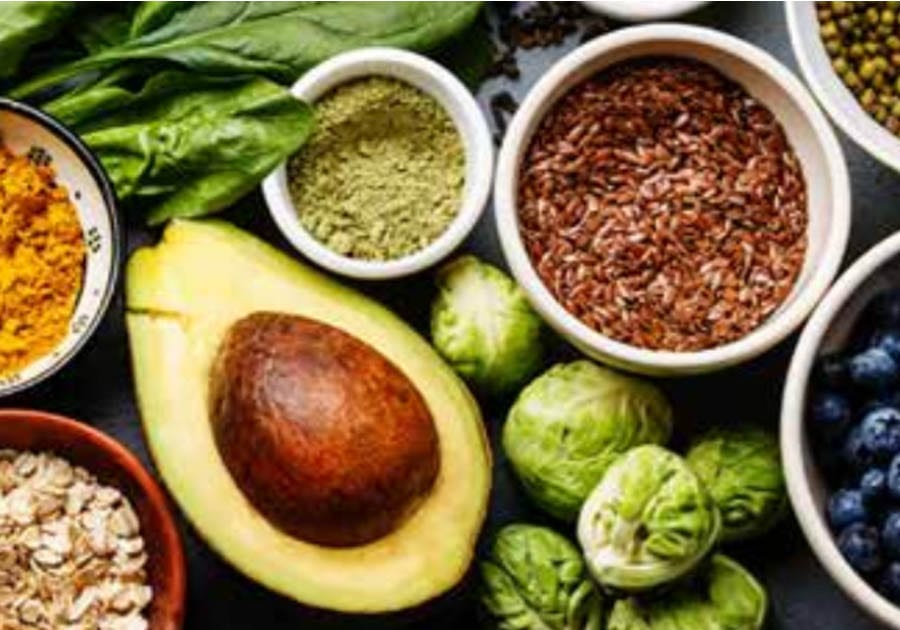ONCE YOU KNOW WHICH THE HEALTHIER CHOICES IN THE SUPERMARKET ARE, SHOPPING CAN ACTUALLY GET EASIER, QUICKER AND CHEAPER.
• Plan meals and snacks for the week and make sure you buy everything you will need.
• Write a list and stick to it.
• Don’t shop when you’re hungry so you are less tempted by unplanned choices.
• Concentrate on buying foods from the Five Food Groups and limit discretionary foods.
• Use your label reading skills to work out which are the best choices and look for these each time you shop.
STOCK UP ON BASICS
Stock up on basics with long ‘best before’ dates like:
• Frozen vegetables and canned vegetables without added salt
• Dried legumes and beans, lentils, baked beans and chickpeas canned without added salt
• Frozen fruit, pie pack fruit or fruit canned in juice
• Wholemeal bread, rolls, crumpets, English muffins and wraps to freeze
• Wholegrain pastas, noodles, lasagne sheets, brown rice, barley, bulgur, couscous, polenta and quinoa
• Lean cuts of meat, skinless chicken and fish for the freezer
• Fish canned without added salt
• Eggs (keep these in the fridge for longer shelf life)
• Powdered skim milk, low fat or skim UHT milk, evaporated skim milk. Not only are these products lower in saturated fat, but also lower in kilojoules and good for weight control. Fresh fruit and vegetable section
• Choose as wide a variety as possible, looking for different colours and fruit and vegetables in season. Make sure you don’t run out of these lower kilojoule choices and always have plenty of variety to keep meals and snacks interesting.
• If we can make half our meals coloured vegetables or salad and have smaller portions of the other foods, we will reduce the kilojoules by up to half. Breads and baked goods
• Choose a variety of different types of breads, rolls, wraps, pitas, tortillas, crumpets and fruit bread to keep meals and snacks interesting. However, some items are heavy or large and equal to several serves of bread. For example a café style fruit bread, focaccias, wraps and Turkish rolls can all be equal to twice as many bread serves as you would expect. If you are trying to lose weight, use the nutrition information panel and compare the energy per serve with that of a slice of bread.
• Look for wholegrain varieties and use label reading skills to choose products with less added salt and more fibre
• Limit baked biscuits, cakes and pastries to special occasions and small amounts. Dried legumes, grains and soups
• Dried legumes and grains like barley, bulgur and couscous are low in salt and very cost effective. Choose a variety and follow the instructions on the packet for soaking and cooking.
• Readymade packet and canned soups tend to be high in added salt, so it’s better to make them at home with fewer salty ingredients.
CANNED VEGETABLES & FISH
• Look for vegetables including corn, legumes and tomatoes that are tinned without added salt.
• Use label reading skills to compare products and choose tinned salmon, tuna and sardines with less added salt (sodium)
MEAL BASES, PASTAS & RICES
• Choose wholemeal pastas and brown rice
• Avoid meal bases and readymade pasta and rice meals as these are high in added salt.
• Use label reading skills to choose pasta sauces that are lower in added salt. Breakfast cereals
• Look for wholegrain varieties and use label reading skills to choose products with less added salt and added sugars and more fibre.
• If you are trying to lose weight, keep your serves of heavier cereals like muesli small.
DAIRY CABINET
• Look for 50% less fat cheese with 15g fat per 100g or less
• Keep trying different fat reduced milks until you find what you like
• Look for lower sugar low fat yoghurts which are not only low in saturated fat and added sugars but also great for a filling lower kilojoule mid meal.
• Make your own custards and milk based desserts using low fat milk and limiting adding sugars.
• Use Evaporated skim milk instead of light cream or light coconut milk
• Fat reduced polyunsaturated spreads are lower in kilojoules and a good choice for people wanting to lose weight. Frozen foods
• Avoid discretionary foods, for example those that are fried, battered or crumbed
• Look for a variety of frozen vegetables and fruit Fresh meat, chicken and fish
• Look for different types of lean meat and mince without visible fat
• Look for skinless chicken breasts (lower in saturated fat)
• Choose processed lean meats including ham only occasionally as they are high in added salt and often high in saturated fat.
TINNED FRUITS AND JUICES
• Look for fruit tinned in natural juice with no added sugars or use pie pack fruit
• Avoid too much dried fruit and fruit juice that are higher in energy and increase risk of tooth decay Special dietary products
• Beware of products that are promoted as being carbohydrate modified or lower in kilojoules. Sometimes they have the same kilojoules as the regular product or are just smaller in serve size.
• Use the energy value (kilojoules) on the nutrition information panel to check for yourself.
